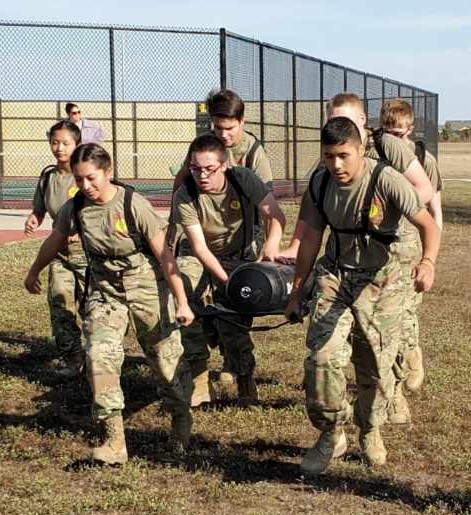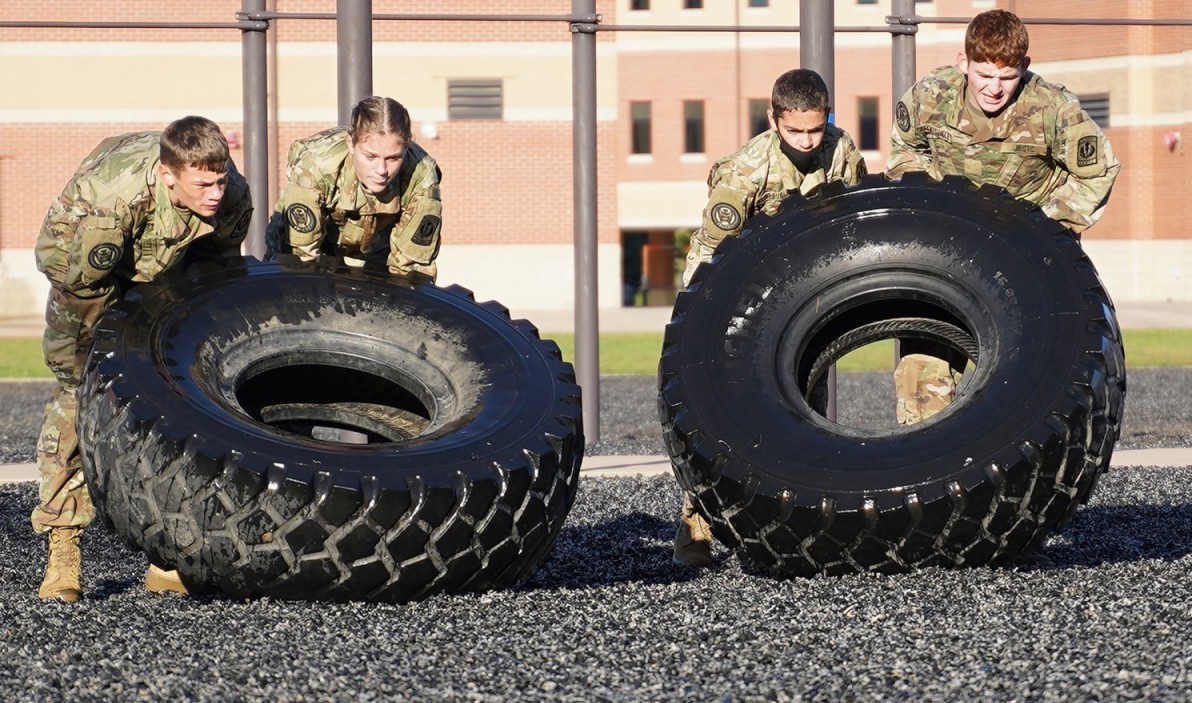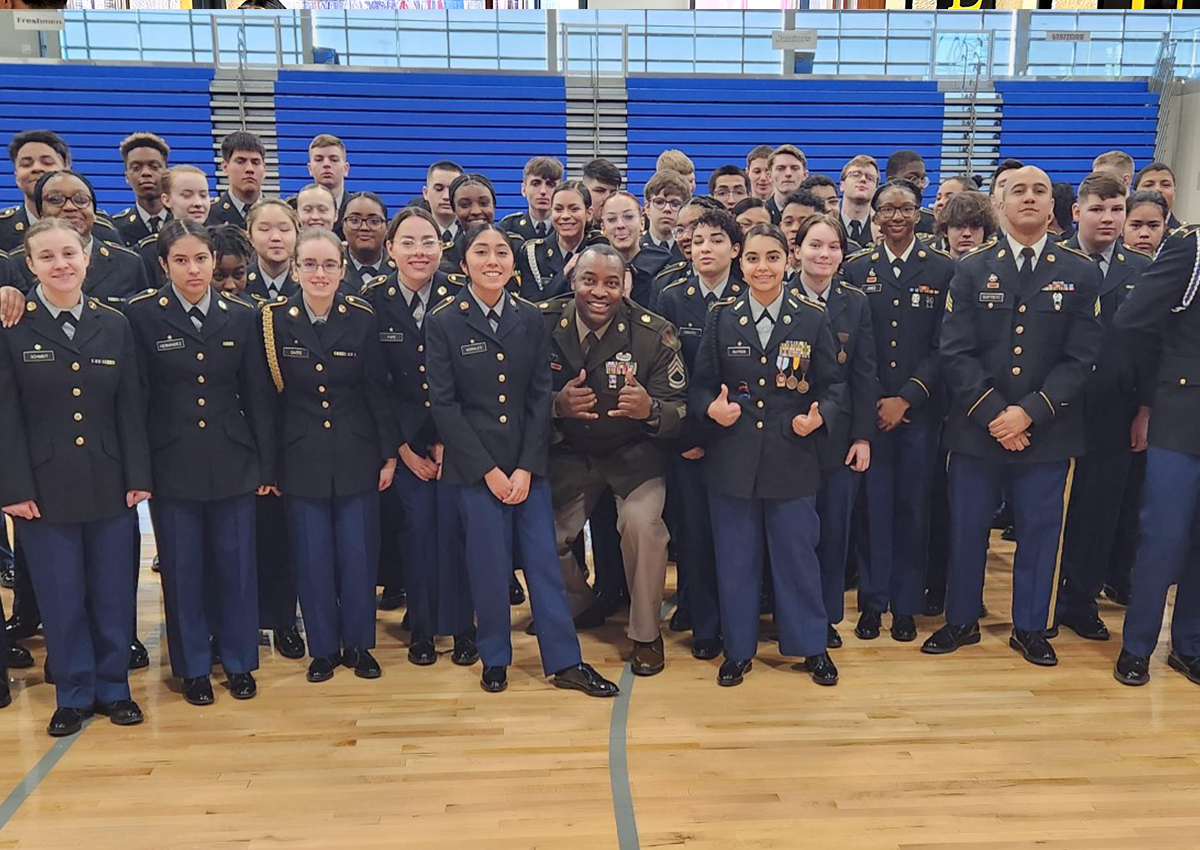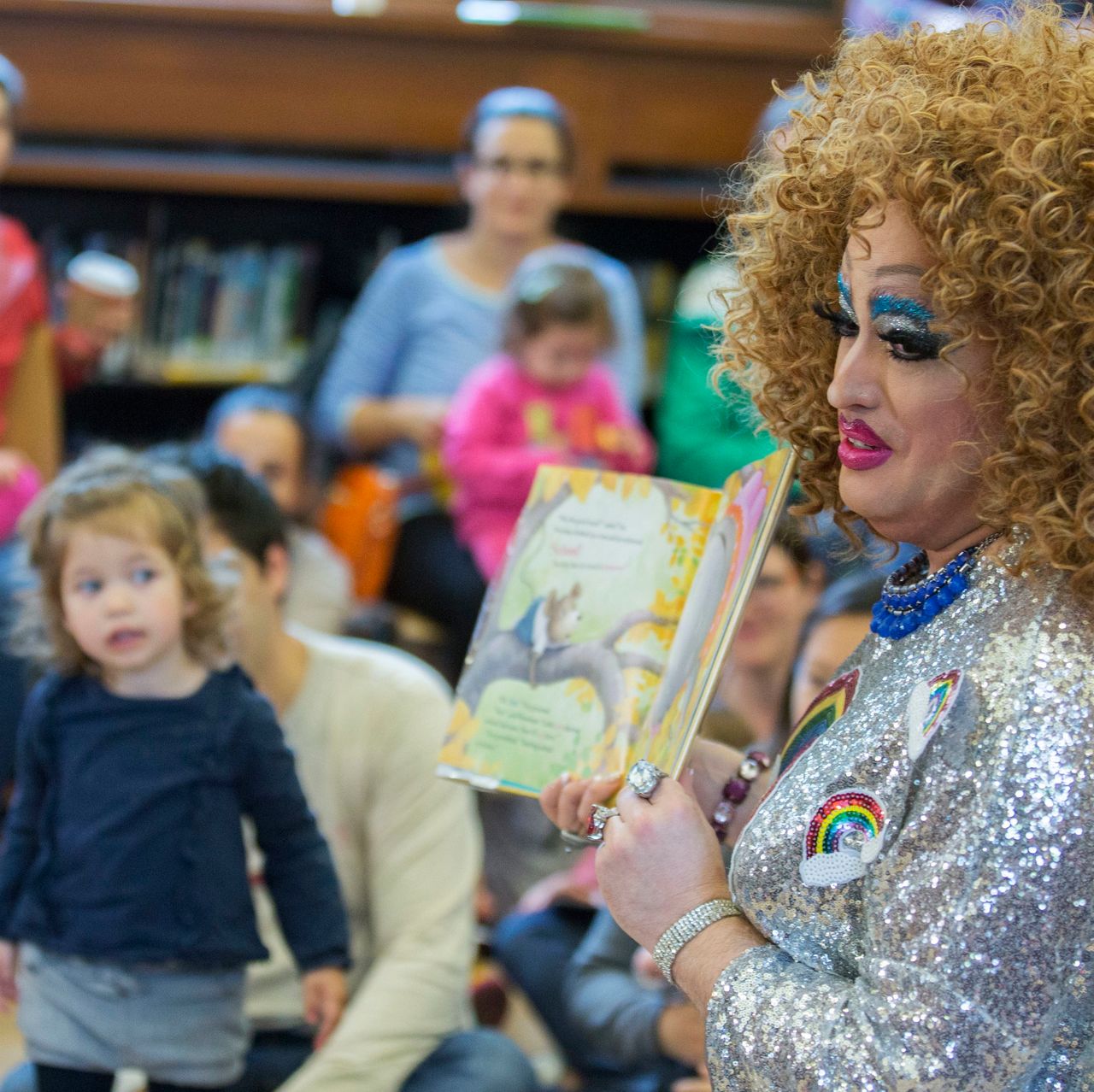Photo: Junction City High School’s JROTC unit celebrates its 2023 Honor Unit with Distiction award
Military analysts say expanding high school Junior Reserve Officer Training Corps programs could be a viable outreach effort to stem flagging military enlistment in the U.S., but like their counterparts across the country, Kansas JROTC programs are sparse among the state’s rural school districts.
Writing in a post last October at realcleardefense.com, Lt. Col Joseph Winter and former U.S. Air Force avaiator Brian Kruchkow note the state of American military recruiting and the past successes of JROTC programs in exposing American youth to the benefits of military tradition and service.

“The best way to tackle the current recruiting crisis is to focus on the highest correlation to joining the military: high school engagement,” Winter and Kruchkow write. “One solution with high recruiting potential is to increase the number of JROTC units in underserved locations, which will cheaply increase recruitment and help with changing societal attitudes, education requirements, and physical fitness.”
Expanding those programs could be a focus for rural school districts in states like Kansas, where patriotic fervor tends to run high and where initiatives to start such programs have been lacking. Most Kansas JROTC programs exist in the state’s more urban areas. Wichita-area schools, for example, host six Army and Marine JROTC units.
Sagging military enlistment in all regions of the United States is evidence of a national recruiting crisis, and has national planners searching for ways to increase interest in military service. The Department of Defense missed its recruting goal in 2022 by 15,000 and in 2023 by 10,000. With disinterest in governmental institutions growing, 2024 may prove to be an all-time low for military involvement, impacting the future efficacy of the American Armed Forces.
In late 2023, the annual defense survey by the Ronald Reagan Presidential Foundation and Institute revealed that just over half (51%) of Americans would recommend that their family and friends join the military. This was a “significant decline” from the 70% of Americans who claimed that they would recommend others to join the military in 2018.
In fact, 33% of Americans said that they would actively discourage their family and friends from joining the military. Of those, 21% indicated that the armed forces are “too dangerous.” Another 20% expressed anti-war and anti-military sentiments. When it came to political partisanship, Republicans cited distrust in political leadership (19%) and “wokeness” (18%) as their top two reasons for discouraging their family and friends from joining the military while Democrats were most concerned about the dangers of the service (26%).
Recruitment has become increasingly difficult in all areas of the country. Last year the Department of Defense fell more than 41,000 people short of its goal for enlistment which forced the military to expand its eligibility requirements. This has been a trend in recent years. In 2020, the military welcomed 148,000 new entrants, a 59% drop from 360,745 entrants in 1980.
Decreased trust and confidence in the American military is primarily to blame for more immediate declines in enlistment. In 2021 Americans expressed record skepticism in the armed forces with only 45% of those surveyed saying they have a “great deal” of trust and confidence in the military. This figure was only slightly higher (46%) in 2023.
Failing confidence may be attributed to changing social attitudes toward international conflict. In the 2000s, the conflicts in Iraq and Afghanistan damaged many Americans’ views of the necessity of aggressive armed force on foreign soil. Many Americans are currently reluctant to become involved in the wars in Ukraine and Gaza for this reason.
Economic prosperity and increased access to higher education have also spurned young adults’ involvement in the military. Disinterest in governmental institutions especially among Gen-Z students and workers and the obesity epidemic are also to blame for shifts in recruitment.

At the same time, fewer households are headed by or include someone who served in the military than previous generations that included WWII, Korea, Vietnam or other era veterans. Generating interest in the military may require generating an understanding of these roles. Programs like Reserve Officers’ Training Corps are designed to inform students of these functions while preparing them for service opportunities in every branch.
Junior Reserve Officers’ Training Corps (JROTC) is the largest youth development program in the nation. According to research conducted by the Congressional Research Service (CRS), an estimated 500,000 students are enrolled in nearly 3,500 sponsored JROTC units at public and private high schools across the country. The Army operates the largest number of these units at 1,700.
The Department of Defense says JROTC “prepares high school students for leadership roles while making them aware of their rights, responsibilities and privileges as American citizens.” Members enroll in leadership and ethics, civics, history, health and wellness, and STEM courses and participate in extracurricular activities such as color guard/drill team, marksmanship, and field trips to military installations.
JROTC programs instill responsibility and commitment in students. According to the CRS, the implementation of JROTC programs in schools has been correlated with increased “attendance and graduation rates, improved test performance, higher self-esteem for female students, and lower rates of disciplinary action.”
Like most other states, Kansas’s JROTC units exist almost entirely in schools with high enrollment rates in urban and suburban areas. However, relatively few barriers exist to establishing and maintaining JROTC programs at any given school regardless of location.

The DOD requires hosting high schools to maintain participation levels of 10% of the student body or 100 students, whichever is less. According to the CRS, JROTC participation is based on the hosting institutions’ local needs and financial solvency as well as the “fair and equitable distribution” of similar programs across the United States.
The military provides funding for each JROTC unit’s instructor(s), uniforms, cadet travel expenses, training aids, textbooks and other educational materials, and any additional operating expenses. Schools are required to provide classrooms and facilities, administrative support, and portions of instructor salaries when necessary.
Unfortunately, JROTC programs are uncommon in rural and/or remote areas. Additionally, JROTC units in public schools tend to have uneven geographic and socio-economic distribution, meaning that students in low-income areas are targeted for military recruitment more often than students in high-income areas. Sparking interest in potential military careers may be dependent on expanding and blending these JROTC programs.

Ursula Billings
Ursula Billings is a freelance writer for The Kansas Informer. She will graduate in May with a degree in Ag Business from Fort Hays State University and begin courses as a first-year law student at University of Kansas School of Law in August 2024.




